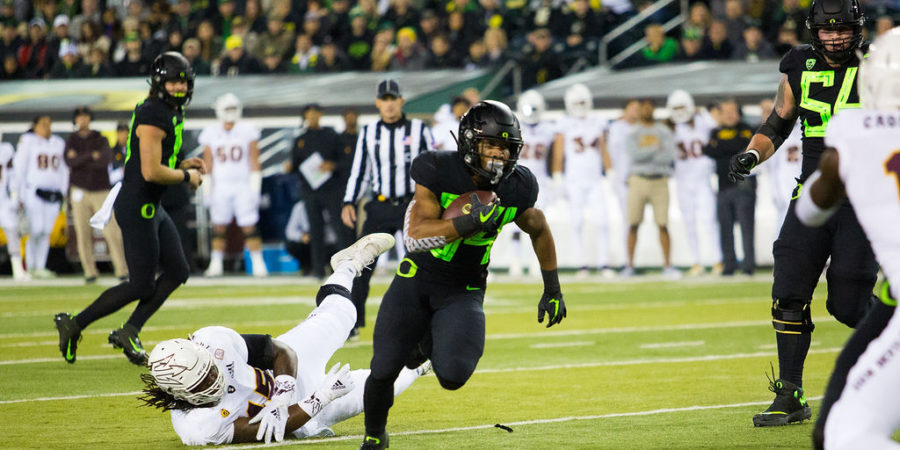It feels almost incomprehensible considering the start of the February signing period was just a few short weeks ago, but ready or not, the unofficial start of the 2019 season is right around the corner.
March 7 marks the beginning of spring football for the Ducks, and similar to last year, the Ducks will have a short break in the middle of spring practices to account for events on the academic calendar, culminating with the annual spring game on April 20.
As we count down the dwindling days leading up to the start of practices, WFOD takes a closer look at the primary storylines unfolding at each position and sets expectations for head coach Mario Cristobal and company as spring arrives.
Today, our Spring Storylines series continues with a look at running back.
Is there room in the Oregon backfield for a third RB?
Entering last season, the question was whether Tony Brooks-James could step up and effectively fill the void left by the program’s all-time leading rusher, Royce Freeman. The answer to that question turned out to be “No,” though it didn’t mean the Ducks were unable to find effective replacements for Freeman altogether.
Instead, with Freeman graduated and off to the NFL, Oregon relied heavily on a pair of freshmen running backs in CJ Verdell and Travis Dye to fill the void. Though neither player feels like a true hand-in-glove fit for Cristobal’s vision of fielding a power rushing attack in Eugene, both players flashed promising potential in their debut seasons at collegiate running backs. Combined, the two rushed for 1,757 yards and 14 touchdowns while averaging 5.14 yards per carry. Verdell, a redshirt freshman, was particularly effective, as he eclipsed the 1,000-yard mark (1,018) and became only the third running back in school history (joining Freeman and LaMichael James) to rush for more than 1,000 yards in a season as a freshman.
With a full year of experience now under their belts, both players will be asked to assume an even greater role in 2019, especially with the ground game expected to be the focal point of the offense as the Ducks search for answers at wide receiver.
But even though Verdell and Dye are expected to command the lion’s share of the carries out of the backfield, is there room for a potential third running back to emerge?
Incoming freshmen Sean Dollars and Jayvaun Wilson may have a say about that this fall, though neither player is expected to arrive on campus until the summer. That leaves redshirt sophomores Cyrus Habibi-Likio and Darrian Felix as the two players with opportunities to carve out more significant roles this spring.
Last year, in his first season of action, Habibi-Likio was more or less relegated to duty as a goal line back. However, it was a role he flourished in, particularly over the first half of the season, where six of his seven touchdowns last season came in the first five games. The steady emergence of Verdell and Dye seemed directly responsible for curtailing the number of goal line opportunities Habibi-Likio received over the second half of the season, but at 6-foot-1 and 210 pounds, he remains as the most the physical presence among the backs who will be on hand this spring.
Felix, on the other hand, had his 2018 season cut short due to a foot injury suffered during non-conference play. As a true freshman in 2017, Felix played sparingly but showed glimpses of the talent he possesses. That season, the Fort Myers (Fla.) native rushed for 182 yards on 30 carries (6.02 yards/carry), with his lone score coming on an 11-yard touchdown scamper in a win over Cal. If fully healthy this spring, don’t be shocked to see Felix emerge as the biggest depth chart mover amongst this group, as he combines terrific explosiveness and agility with a chiseled 5-foot-11, 191-pound frame.
Spring Storylines: Is Oregon insured at QB beyond Justin Herbert?

